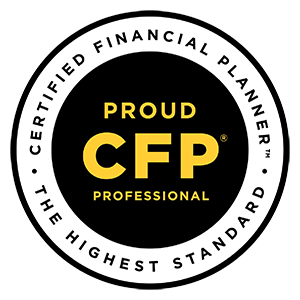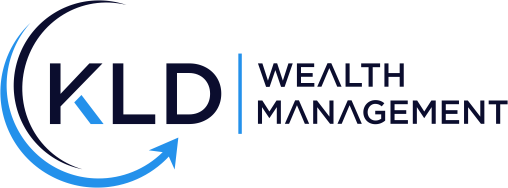Get in touch
Call or Text:
937-404-5180
Email:
dwiedmeyer@kldwealth.com
Purchasing a car is a big decision, and it’s one that goes beyond choosing the make, model, and color. One of the first questions many people face is whether to lease or buy. Both options have their advantages and drawbacks, and the right choice often depends on your financial situation, lifestyle, and long-term goals.
As a fee-only financial planner, I often hear clients ask, “What’s the smarter financial move?” There’s no one-size-fits-all answer, but understanding the pros and cons of each option can help you make an informed decision. Let’s break down the differences and explore which option might be best for you.
Defining the Basics: Lease vs. Buy
Before diving into the pros and cons, it’s essential to understand what it means to lease versus buy a car.
1. What Does It Mean to Lease a Car?
Leasing a car is similar to renting—it’s a long-term rental agreement that typically lasts 2-4 years. You’ll make monthly payments, just as you would with a car loan, but the payments are generally lower because you’re only paying for the car’s depreciation over the lease term, along with interest and fees. At the end of the lease, you don’t own the car; instead, you have the option to return it, buy it at a predetermined price, or lease a new one.
2. What Does It Mean to Buy a Car?
Buying a car means you’re either taking out a loan to purchase it or paying for it in full upfront. Once the loan is paid off, you own the car outright, and it’s yours to keep for as long as you want. Buying a car typically results in higher monthly payments compared to leasing, but you’ll eventually be free of payments once the loan is paid off.
Benefits of Leasing a Car
Leasing a car comes with several advantages, making it an attractive option for people who prioritize having the latest model and lower monthly payments.
1. Lower Monthly Payments
Leases generally have lower monthly payments compared to loans, making it a good option if you want to drive a new car without stretching your monthly budget. This can free up cash for other financial goals, such as paying down debt or investing in retirement.
2. Always Drive a Newer Car
If you’re the type of person who loves driving the latest model with updated features and safety technology, leasing allows you to upgrade every few years. This way, you’ll always have access to new cars without the hassle of selling or trading in a vehicle.
3. Lower Maintenance Costs
Most leases are within the manufacturer’s warranty period, meaning you’re unlikely to face significant repair costs. Routine maintenance like oil changes and tire rotations might still be required, but large repair bills are rare.
4. Tax Benefits for Business Use
If you use the car primarily for business, you may be able to deduct a portion of your lease payment. This can make leasing an even more attractive option for business owners and those who need a reliable vehicle for work.
Pitfalls of Leasing a Car
While leasing has its perks, it’s not without its downsides. Here are some of the key drawbacks to keep in mind.
1. No Ownership
At the end of the lease, you don’t own the car. This means that while you’ve been making payments, you don’t build equity. If you choose to lease again, you’ll always have a car payment.
2. Mileage Restrictions
Most leases come with strict mileage limits—typically between 10,000 and 15,000 miles per year. Exceeding these limits can result in costly penalties, making leasing a less ideal option for those who have long commutes or frequently travel by car.
3. Wear-and-Tear Fees
Leases often include strict guidelines on what constitutes “normal wear and tear.” If your car has excess scratches, dents, or interior damage, you could be charged additional fees at the end of the lease.
4. Complicated to Exit Early
Getting out of a lease early can be challenging and expensive. You may be on the hook for early termination fees, remaining payments, or other costs, making it difficult if your needs change unexpectedly.
Benefits of Buying a Car
Buying a car, whether through financing or paying cash, can offer several financial and lifestyle advantages, especially for those who want long-term flexibility.
1. Ownership and Equity
Once you’ve paid off your car loan, the vehicle is yours, and you have a tangible asset. You’re free to keep it as long as you want, and you can use its value as a trade-in or sell it privately when you’re ready for something new.
2. No Mileage Restrictions
Unlike leases, buying a car means there are no mileage limits. If you drive a lot, whether for work or road trips, you don’t have to worry about incurring penalties for racking up the miles.
3. Customization Freedom
When you own your car, you can modify it as you please—add a new sound system, change the paint color, or install custom rims. These modifications would typically violate a lease agreement.
4. Cost Savings Over Time
Although the upfront costs of buying a car are higher, owning a car becomes more economical in the long run if you keep it for several years. Once the loan is paid off, you’re free of car payments.
Pitfalls of Buying a Car
Buying a car isn’t without its challenges. Here are a few potential pitfalls to be aware of.
1. Higher Monthly Payments
Because car loans often have shorter terms (typically 3-5 years) compared to leases, monthly payments are higher. This can stretch your budget in the short term.
2. Rapid Depreciation
New cars lose a significant portion of their value within the first few years. If you buy a brand-new car, its value will drop as soon as you drive it off the lot, and it could lose up to 20% of its value in the first year alone.
3. Maintenance Costs
Once your car’s warranty expires, you’re responsible for all repairs and maintenance costs. As the car ages, these costs can add up, making an older vehicle more expensive to keep on the road.
4. Potential for Negative Equity
If you take out a long-term loan or the car’s value drops faster than expected, you could end up “upside down” on your loan—owing more than the car is worth. This can complicate things if you want to sell or trade it in early.
Financial Considerations: Lease vs. Buy
When deciding whether to lease or buy, consider your overall financial picture and long-term goals.
1. Monthly Cash Flow Impact
Leasing offers lower monthly payments, which can be attractive for short-term cash flow management. However, buying has long-term benefits once the loan is paid off.
2. Long-Term Cost Comparison
Over a 5-10 year period, buying is often the more economical option, especially if you keep the car for several years after the loan is paid off. Leasing repeatedly can add up over time.
3. Resale Value and Depreciation
If you’re buying, consider cars known for high resale value, as this can mitigate the effects of depreciation. For leases, depreciation is built into your monthly payment, making it a less critical factor.
4. How It Fits into Your Financial Plan
The decision should align with your broader financial strategy. If having lower monthly payments frees up cash for other financial goals, leasing could be a good fit. If long-term cost savings and building equity are your priorities, buying might be better.
Which Is Right for You?
Leasing and buying each have their benefits and drawbacks. Leasing is best for those who value driving a new car and lower monthly payments, while buying is ideal for those looking for long-term savings and flexibility.
If you’re unsure which option is best for your financial situation, let’s chat! I can help you weigh the pros and cons and decide how it fits into your overall financial plan. Contact us today to discuss your options and drive away with confidence.



Phone
937-404-5180
706 Deerfield Rd.
Lebanon, OH 45036
Get financial wellness tips, directly to your inbox.
Contact Us
We will get back to you as soon as possible.
Please try again later.
All Rights Reserved | KLD Wealth | Privacy Policy | Form ADV
Advisory services offered through KLD Wealth Management, LLC, an investment adviser registered with the state(s) of Ohio. Advisory services are only offered to clients or prospective clients where KLD Wealth Management, LLC and its representatives are properly registered or exempt from registration.
The information on this site is not intended as tax, accounting or legal advice, nor is it an offer or solicitation to buy or sell, or as an endorsement of any company, security, fund, or other offering. Information provided should not be solely relied upon for decision making. Please consult your legal, tax, or accounting professional regarding your specific situation. Investments involve risk and have the potential for complete loss. It should not be assumed that any recommendations made will necessarily be profitable.
The information on this site is provided “AS IS” and without warranties either express or implied and the information may not be free from error. Your use of the information provided is at your sole risk.
